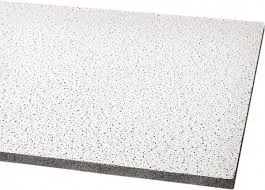- Afrikaans
- Albanian
- Amharic
- Arabic
- Armenian
- Azerbaijani
- Basque
- Belarusian
- Bengali
- Bosnian
- Bulgarian
- Catalan
- Cebuano
- Corsican
- Croatian
- Czech
- Danish
- Dutch
- English
- Esperanto
- Estonian
- French
- German
- Greek
- Hindi
- Indonesian
- irish
- Italian
- Japanese
- Korean
- Lao
- Malay
- Myanmar
- Norwegian
- Norwegian
- Polish
- Portuguese
- Romanian
- Russian
- Serbian
- Spanish
- Swedish
- Thai
- Turkish
- Ukrainian
- Uzbek
- Vietnamese
nov . 30, 2024 08:13 Back to list
Ceiling Tie Wire Applications and Installation Techniques for Enhanced Support and Stability
Understanding Ceiling Tie Wire Importance and Usage
When it comes to construction and interior design, the structural integrity of a building is paramount. One crucial element that often goes unnoticed is ceiling tie wire. This seemingly simple component plays a significant role in ensuring safety and stability in both residential and commercial buildings. In this article, we will explore the purpose, types, and installation procedures of ceiling tie wire, shedding light on its vital importance.
What is Ceiling Tie Wire?
Ceiling tie wire is a type of wire used primarily in the construction of ceilings and other structural components. Typically made from high-strength materials such as galvanized steel, it is designed to provide support and reinforcement. The essential role of ceiling tie wire is to secure various elements, including ceiling joists, ductwork, and electrical fixtures, ensuring they remain in place and functioning effectively.
Importance of Ceiling Tie Wire
The significance of ceiling tie wire cannot be overstated. In the absence of appropriate reinforcement, ceilings can sag or collapse, leading to potentially dangerous situations. This is especially critical in commercial buildings, where heavy equipment, lighting fixtures, and HVAC systems are often installed overhead. By stabilizing these installations, ceiling tie wire helps prevent structural failures and enhances overall safety.
Moreover, ceiling tie wire serves an aesthetic purpose. By ensuring that all components are securely held in place, it contributes to a clean and organized appearance. This is particularly important in environments where presentation matters, such as restaurants and office spaces.
Types of Ceiling Tie Wire
Ceiling tie wire comes in various types, each suited for different applications. Some common types include
1. Galvanized Wire This is the most widely used type of ceiling tie wire. Its coating helps prevent rust and corrosion, making it ideal for both indoor and outdoor applications.
2. Aluminum Wire Lighter than galvanized wire, aluminum is easier to work with. However, it may not provide the same level of strength and is usually used in specific scenarios where weight is a concern.
ceiling tie wire

3. Cuplock Wire This type is often used in scaffolding and temporary structures, providing robust support during construction projects.
Installation Procedures
Installing ceiling tie wire requires careful planning and execution. Here are the general steps to follow
1. Planning Before installation, it is important to assess the site and determine where the tie wire will be most beneficial. This includes evaluating the weight of the elements being suspended.
2. Cutting the Wire Use wire cutters to cut the tie wire to appropriate lengths based on the distance between the suspended item and the main structural component.
3. Securing the Wire Loop the wire around the main support beam or ceiling joist. Twist the wire to create a secure hold. For added safety, some professionals recommend using two twists for greater stability.
4. Attaching the Items Securely attach the desired fixtures or materials to the tie wire, ensuring that everything is properly aligned and balanced.
5. Final Inspection After installation, conduct a thorough inspection to ensure that all components are secure and that the ceiling tie wire is supporting the intended load.
Conclusion
In conclusion, ceiling tie wire may not be the most glamorous aspect of construction, but its importance cannot be overlooked. By ensuring stability and safety, it contributes to the longevity of a building and the safety of its occupants. Whether in a residential space or a commercial environment, understanding and correctly implementing ceiling tie wire is vital for any successful construction project. So, the next time you look up at a ceiling, remember the unsung hero that keeps everything in place—ceiling tie wire.
-
Transform Interiors with PVC Gypsum Ceiling: A Stylish, Durable, and Moisture-Resistant SolutionNewsMay.19,2025
-
The Smart Interior Upgrade: Discover the Durability and Versatility of Gypsum Ceiling Access Panel SolutionsNewsMay.19,2025
-
The Smart Choice for Interior Design: Discover the Value of PVC Gypsum Ceiling SolutionsNewsMay.19,2025
-
Mineral Fiber Ceiling Tiles: The Smart Blend of Performance and AestheticsNewsMay.19,2025
-
Mineral Fiber Ceiling Tiles: The Superior Choice Over Gypsum for Sound and Fire SafetyNewsMay.19,2025
-
Mineral Fiber Ceiling Tiles: Eco-Friendly Strength and Style for Every CeilingNewsMay.19,2025







